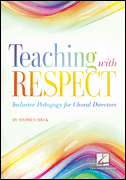LIMASSOL, CYPRUS | MILWAUKEE, WI, USA—12.4.23—Hal Leonard, the legendary sheet music and educational publisher, joins digital leader Muse Group, in a partnership set to revolutionize access to popular music and creator tools for musicians worldwide.
As makers of the world’s most popular online libraries, tools, and community spaces for audio creators — including MuseScore, Ultimate Guitar, and Audacity — this partnership further solidifies Muse Group’s position as the industry leader in music content and creation. Both Muse Group and Hal Leonard will retain their respective HQs in the USA and Cyprus, and distinct operational expertise.
Supported by growth investment from Francisco Partners — a key investor in industry-leading music technology and content companies — this agreement marks the next step in a close, long-standing partnership between Muse Group and Hal Leonard. Both companies share a vision to provide unparalleled access to the best content and resources for the passionate, global community of everyday music makers, educators, and learners.
Along with its massive catalog of premier educational and classical music, Hal Leonard’s licensed arrangements include the world’s most iconic artists and scores, from Taylor Swift and The Beatles to John Williams and Disney soundtracks. Combined with over 3 million expert and community-created tabs and compositions on Muse Group’s Ultimate Guitar and MuseScore, the joint business now includes a content library of over 5.5 million scores, tabs, books, video courses, backing tracks and presets.
Now musicians can look forward to learning more from Hal Leonard’s high-quality arrangements and top-selling content in digitized, interactive formats on Muse platforms. With over 300 million annual visitors and over 40 million accounts on Ultimate Guitar and MuseScore alone, a whole new global audience will discover Hal Leonard’s library.
Muse Group will also bring significant creator software and technical innovation to Hal Leonard’s digital offerings. Flagship Muse Group achievements include the award-winning, open-source MuseScore 4 notation app, cutting-edge Muse Sounds playback presets, plus StaffPad’s new machine-learning ‘Piano Capture’ composition tool.
In addition to their invaluable licensing and arranging experience, the considerable educational expertise of the Hal Leonard team will provide impetus to further expand Muse Group’s offering to music learners of all skill levels, through both crafted curriculums and pioneering AI-powered tools. “Our passion for improving the lives of all musicians has always been at the heart of Muse Group — and we’re immensely excited to partner with the Hal Leonard team who share that passion,” says Eugeny Naidenov, Muse Group CEO.
The Hal Leonard name and legacy as a cornerstone of music education for millions will proudly continue, and all Hal Leonard employees will continue in their current roles. The newly expanded Muse Group remains committed to continuing Hal Leonard’s valued partnerships with educators, retailers, distributors, suppliers, content creators and license holders that serve the global music community.
“This merger will create more music makers worldwide and will lead to even more advances in music education technology, while also expanding ways creators and rights holders can make their musical works more widely available,” commented Larry Morton, Hal Leonard’s Chairman. “Hal Leonard and Muse have been working closely together for over fifteen years and have built trust and mutual respect over that time. Combining the strengths of both companies is a truly exciting prospect, full of potential ways to grow the music industry in new directions.”
Both Hal Leonard and Muse Group are historic trailblazers in the music industry. Hal Leonard revolutionized print music publishing in the 1940s, by providing arrangements of popular songs to school bands for the first time. Ultimate Guitar, the forerunner of Muse Group, sparked a similar revolution in the late 1990s, by providing easily accessible tabs to guitarists in the internet’s formative era.
Muse Group and Hal Leonard are thrilled to continue pioneering new solutions for creatives, music makers and learners as partners in the future.
About Muse Group:
Muse Group is a visionary, international team of music lovers and audio obsessives, empowering millions of creatives to play, produce and compose every day. The company began life in 1998 as Ultimate Guitar, a tab sharing site that grew into the world’s most popular online musician community. Muse Group now includes products such as MuseScore, Audacity, StaffPad, and more.
About Hal Leonard:
Hal Leonard, the world leader in sheet music publishing and music education, has a storied history of educating and providing music learners with the very best arrangements of popular music for over 75 years. With experienced teams based all over the globe, Hal Leonard also supplies music and instructional materials to millions of educators and learners as well as instruments, gear, and software to music retailers worldwide.

